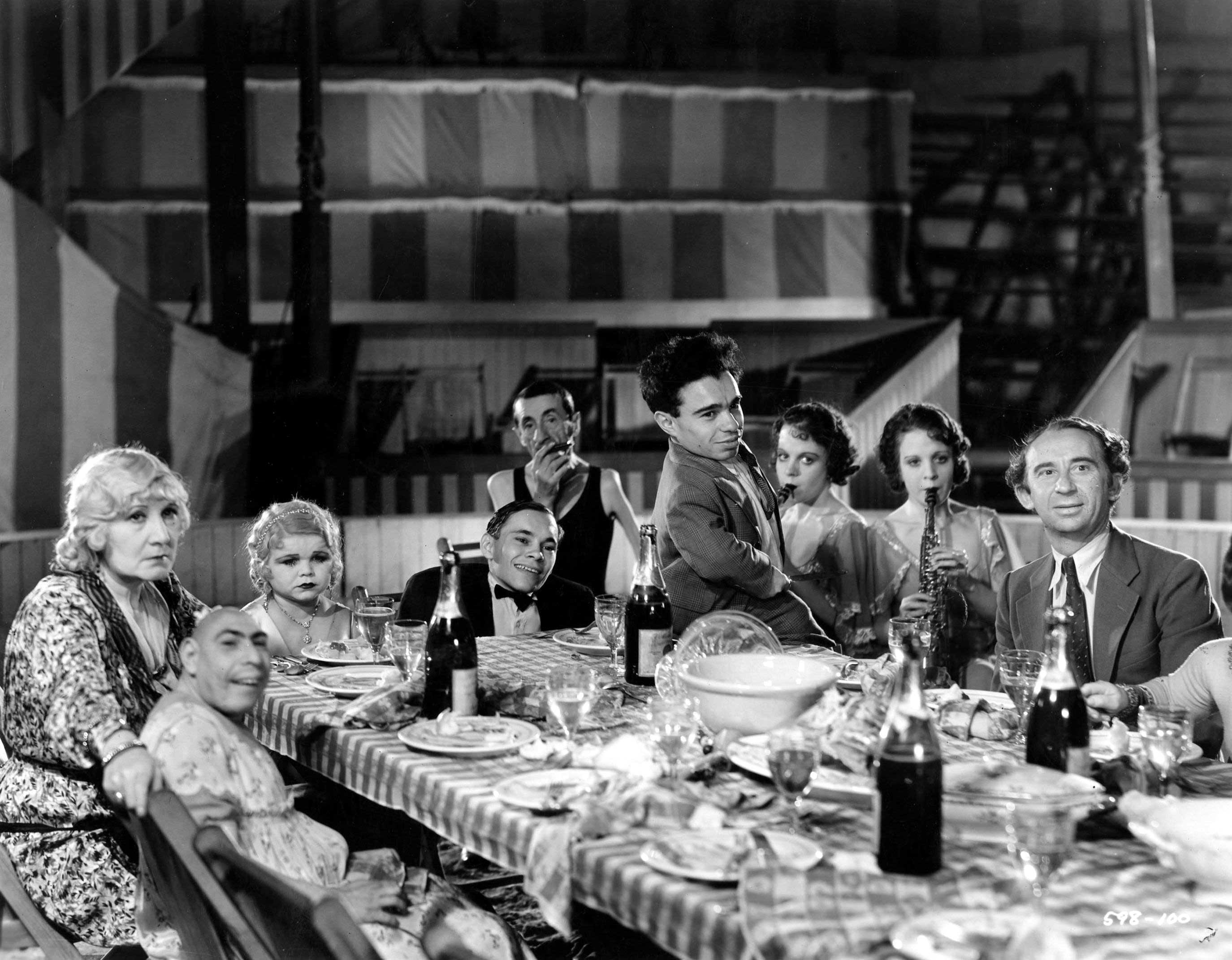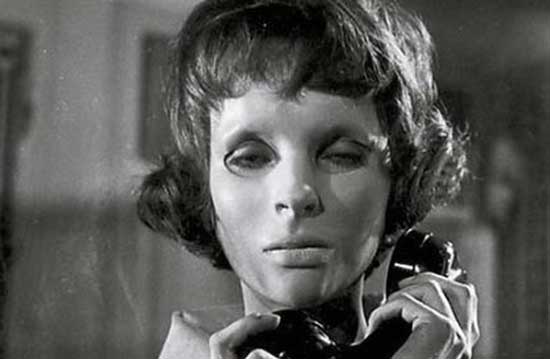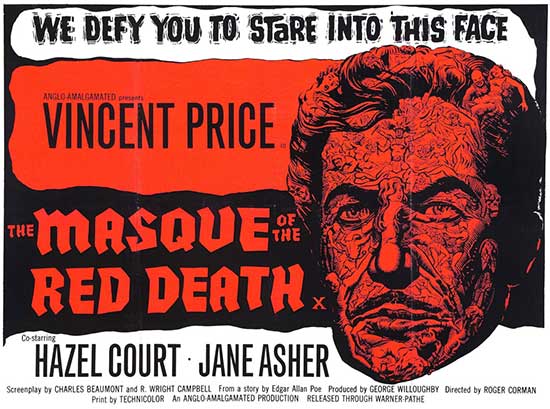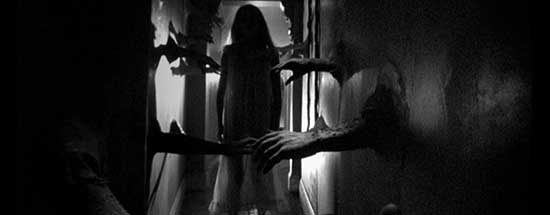Sometime, in the late 1960s, the horror genre changed; it became mainstream, with big-name stars and bigger budgets. It was no longer more or less the main province of genre fans and stars like Vincent Price, Boris Karloff, or Lon Chaney, Jr., or established genre directors like Terence Fisher or Freddie Francis.
In this post from my personal blog, I date this change to Roman Polanski’s smash hit, Rosemary’s Baby, which debuted in 1968. Rosemary’s Baby had mainstream production values, mainstream actors, and a director whose talents were far above those of the majority of horror filmmakers of the time. It was quickly followed by other mainstream horror films from big-name, mainstream directors, such as William Friedkin’s The Exorcist and Richard Donner’s The Omen.
With that in mind, for the purposes of this list, I consider a “classic” horror film to be one that was filmed before 1968. Most of the older horror films of the pre-1968 era don’t strike modern audiences as all that scary or creepy. There are exceptions, though, and here are ten that still might raise the hairs on the back of the neck of today’s jaded horror fans. Check out our latest post from Horror News
Nosferatu (1922), directed by F.W. Murnau; starring Max Schrek, Greta Schroder, and Gustav von Wangenheim. (This listing relates to the 132-minute, 2006 digitally restored version; there are many different versions floating around, but this is one of the very best.) This film, the very first onscreen version of Bram Stoker’s Dracula, is worth watching today, even though it’s almost 100 years old. There are no scenes considered shocking by today’s standards, but overall the film is incredibly creepy and has many disturbing images that stay with the viewer long after the ending. (The advanced age of the film only adds to its creepiness.) The most disturbing image is that of the monstrous vampire, who, sporting pointed ears, a misshapen head and snake-like fangs, looks nothing like the glamorous Drac in evening dress that we all know best. This film has many plot points in common with the novel, but names of characters and locations were changed to avoid being sued by Stoker’s estate; it didn’t work, as Stoker’s estate sued anyway. The 2006 restoration cleaned up most scratches and dings, and the new master print looks fantastic. On disc and YouTube.
Freaks (1932), directed by Tod Browning, starring Wallace Ford, Leila Hyams, Olga Baclanova, Henry Victor, and Daisy and Harry Earles. This notorious film was Browning’s second feature after his smash hit, Dracula (1931). For years, it was impossible for most people to see Freaks, unless it was playing at the local arthouse theatre. The subject matter was considered far too disturbing for mainstream viewers, even after almost 30 minutes were trimmed from the original cut to satisfy censors. (Reportedly, no one knows what happened to the lost footage.) The film is about a traveling circus that features regular circus acts, along with a “freakshow” that exhibits people with unusual disabilities.
To portray the “freaks” employed by the circus, Browning used actors with real-life disabilities, such as The Human Torso, a man born without legs or arms, who can only move by squirming on the ground like a worm. (The use of such people in the film caused many critics to denounce it as cruel and exploitative.)
As the story moves on, the disabled circus performers create a tight-knit family who look out for one another, until one day, a dwarf named Hans falls in love with Cleopatra, a normal-sized trapeze artist. Cleopatra only marries Hans for his money, with plans to kill him and inherit his estate. When the others find out about the murder plot, they extract a brutal revenge on Cleopatra and her lover, Hercules. The revenge scenes are brilliantly shot in Expressionist-style cinematography and are still memorably menacing. On disc and streaming.
The Bad Seed (1956), directed by Mervyn Leroy; starring Nancy Kelly, William Hopper, and Patty McCormack. Child actress McCormack received an Oscar nomination for her portrayal of Rhoda Penmark, one of the most depraved serial killers ever to grace the big screen. The pigtailed, sociopath Rhoda is willing to kill for any trinket that takes her fancy, even though she’s only eight years old. She beats and drowns another child to death, pushes an old lady down the stairs, and burns a mentally handicapped man alive. At the end, she’s already planning her next murder, when a fortuitous stroke of lightening intervenes. (In the play of the same name, Rhoda survives.) She creates all of this murderous mayhem without messing up her perfectly starched pinafores and lacy ankle socks. McCormack’s performance as the ruthless little blonde killer is utterly chilling, even for today. On disc and streaming.
Eyes Without a Face (1960), directed by Georges Franju; starring Pierre Brasseur, Alida Valli, Edith Scob, and Edna Gruber. In this famous French film, Brasseur plays a brilliant, middle-aged surgeon who wants to give his facially disfigured daughter, Christianne (Scob), a new face. He sends his assistant Louise (Valli) out to kidnap unsuspecting young women and bring them to his private clinic. There, he operates on them to provide a face transplant for Christianne—with little success. Christianne begins to crack under the pressure of repeated failed transplants, until she’s nearly insane. A graphic face removal scene, justifiably famous among many horror fans, turns the “ick factor” up to 11, almost 60 years later.
The brilliant b&w cinematography provided in this film by Eugen Schufftan is just one among many elements that make Eyes Without a Face a horror masterpiece. (Yes, it inspired the Billy Idol song of the same title.) In French with English subtitles; on disc and streaming.
Peeping Tom (1960), directed by Michael Powell; starring Carl Boehm, Anna Massey, Moira Shearer, and Pamela Green. Boehm plays a young, aspiring filmmaker who is obsessed with capturing “the face of fear” on his hand-held movie camera. To aid in his project, he stalks and kills sexy young women and films the act while gutting his victims with a special spike attached to his camera. Boehm’s character, Mark, is then filmed watching his own macabre footage—scenes that are possibly the progenitor of today’s “found footage” horror genre. Now considered a masterpiece, this film is often described as the British answer to Hitchcock’s Psycho (see below); upon release in the United Kingdom, it was slammed by critics as vile and depraved, and the film seriously damaged Powell’s career. Famed for making classics such as The Red Shoes (1948) with his partner, Emeric Pressburger, Powell made only a handful of other films after this one.
Unfortunately, the US-compatible disc is out of print; check auction sites for used versions. It currently is listed as unavailable for streaming on Amazon, but may be available on other streaming sites.
Psycho (1960), directed by Alfred Hitchcock from a script based on a novel by Robert Bloch; starring Anthony Perkins, Janet Leigh, Vera Miles, and Martin Balsam. Hitchcock’s sordid yarn about a homicidal, cross-dressing motel operator features the most famous murder scene in cinema history. And it’s still heart-pounding to watch, even though we don’t actually see Marion Crane (Leigh) die (we just see her grab the shower curtain and pop the rings out, as her body sinks to the tub floor, then we see her corpse staring at us with open eyes.) The scene in the “fruit cellar” where Lila Crane (Miles) finally meets “Mother” also still packs a punch.
Cinematographer John L. Russel was nominated for an Oscar for this film, which marked Hitchcock’s return to black-and-white after years of shooting in color. A pointless shot-by-shot remake in color, directed by Gus Van Sant, was released in 1997. On disc and streaming.
Whatever Happened to Baby Jane? (1962), directed by Robert Aldrich; starring Bette Davis, Joan Crawford, Victor Buono, and Maddie Norman. This macabre psychological thriller features Bette Davis in one of her most famous roles, as a deranged former child star named Baby Jane, who has been driven insane by the loss of her fleeting stardom. She tortures and then systematically starves her handicapped sister Blanche, after finding out that Blanche wants to sell their crumbling, Spanish-style mansion in Hollywood. (Blanche is played by Joan Crawford, Davis’s hated arch-rival in real life.) This film is still creepy and grotesque, with several unforgettable scenes, such as Baby Jane feeding her starving sister a dead rat and dancing around Blanche’s emaciated body while dressed in a frilly little girl dress. On disc and streaming.
Blood and Black Lace (1964), directed by Mario Bava, starring Cameron Mitchell, Thomas Reiner, Mary Arden, and Eva Bartok. This scarlet-drenched film was a major influence on Dario Argento’s horror masterpiece, Suspiria (1977). Some film historians identify it as the first real Italian giallo, while others credit an earlier Bava film, The Girl Who Knew Too Much (1963). Blood and Black Lace is also considered an early progenitor of the modern slasher film.
The plot follows a fancy fashion house owned by Max Morlan (Mitchell) and Countess Como (Bartok), which employs a bevy of beautiful, young female models. Alarmingly, the models keep getting stalked and murdered by a mysterious, black-gloved killer. Disturbing scenes include a victim being tortured with a hot stove and a highly suspenseful chase in a darkened antiques store. Bava shot much of the stunning cinematography himself, uncredited. The jazzy, brass-dominated score by Carlo Rustichelli is a period masterpiece. Dubbed in English; on disc and streaming.
The Masque of the Red Death (1964), directed by Roger Corman; starring Vincent Price, Jane Asher, Patrick Magee, and Hazel Court. If you think this film is just another Corman-Price winky-eyed campfest like The Raven (1963), think again. Price as Prince Prospero is truly evil, without a hint of his trademark overacting. Disturbing scenes include a man burned alive in a gorilla costume and the final climax, where guests at a masquerade party are drenched in blood as a plague overtakes each of them in turn. The stunning cinematography was provided by the future A-List director, Nicholas Roeg. On disc and streaming.
Repulsion (1965), directed by Roman Polanski; starring Catherine Deneuve, Ian Hendry, Yvonne Furneaux, and John Fraser. In this low-budget, indie creeper, French beauty icon Catherine Deneuve plays a shy young manicurist named Carol, who dislikes and fears men. Various encounters with an ardent suitor (Fraser), and the temporary absence of her roommate sister (Furneaux), push Carol over the edge into a homicidal psychosis. This film starts slow, but later features many chilling scenes, including Carol slashing one of her victims with a straight razor, which causes blood to spurt all over her beautiful long, blonde hair.
This film was Polanski’s first in English; it won several European film awards/nominations, including the German Silver Bear for Cinematography. The stunning Expressionist-style camerawork was provided by Gilbert Taylor, who also shot The Omen (1976) and Star Wars Episode IV: A New Hope (1977). On disc and streaming.
 Horror News | HNN Official Site | Horror Movies,Trailers, Reviews
Horror News | HNN Official Site | Horror Movies,Trailers, Reviews















